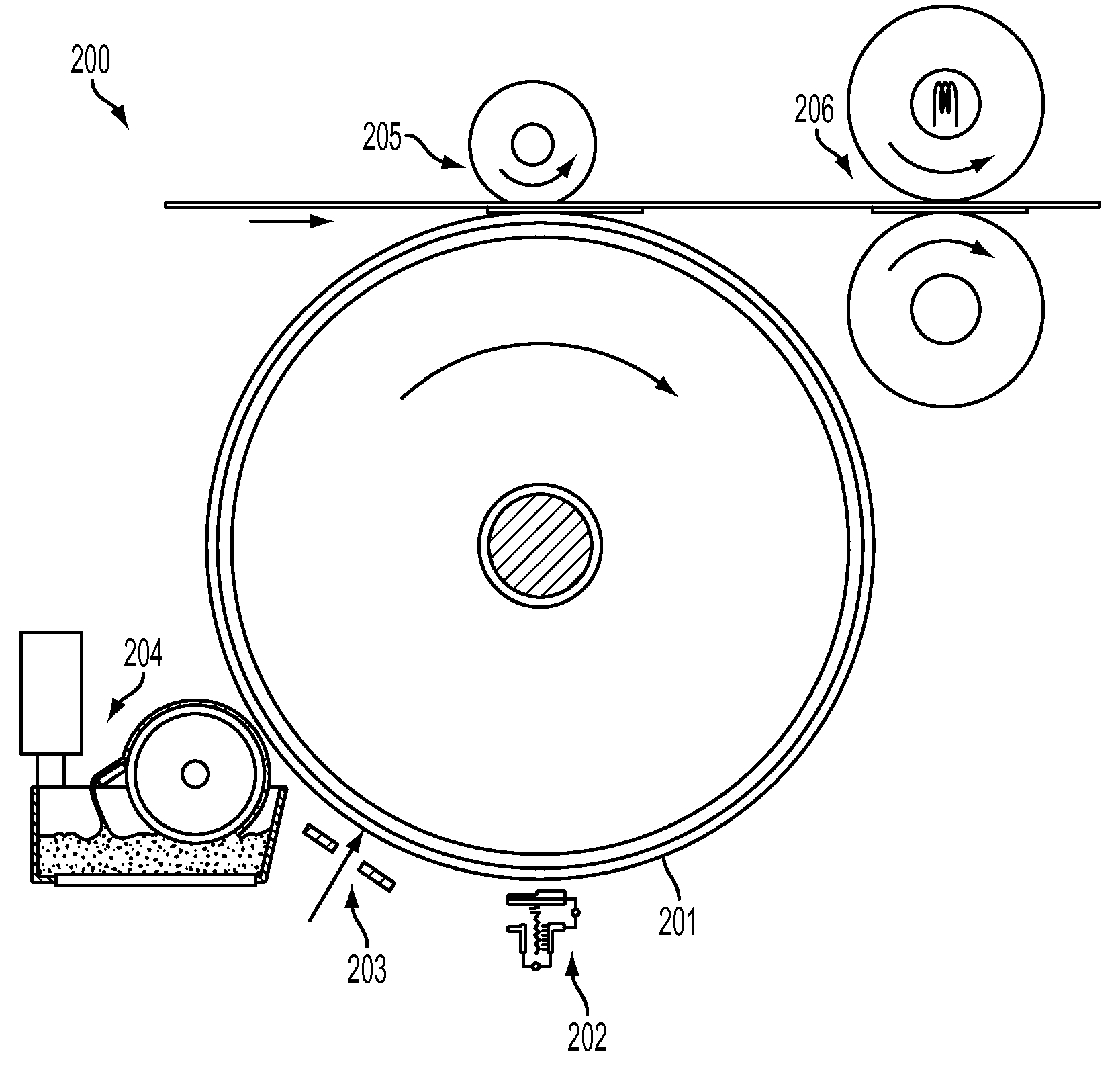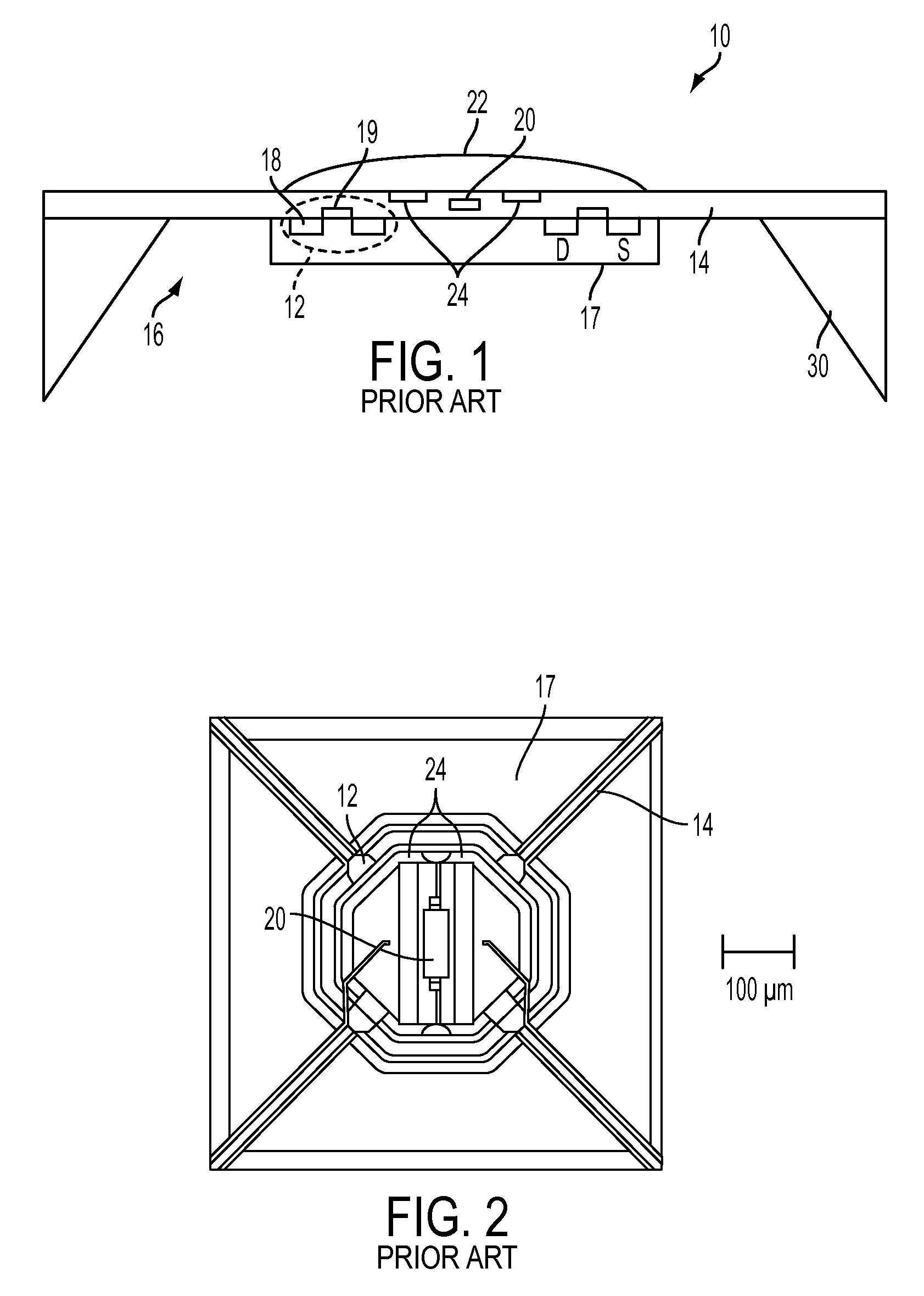Heating element incorporating an array of transistor micro-heaters for digital image marking
a transistor micro-heater and array technology, applied in the direction of electrographic process, recording apparatus, instruments, etc., can solve the problems of high cost, low total power requirement for addressing a large-area surface at reasonable high speed, and inefficient thermal print head
- Summary
- Abstract
- Description
- Claims
- Application Information
AI Technical Summary
Benefits of technology
Problems solved by technology
Method used
Image
Examples
Embodiment Construction
[0030]A schematic view of an example of a prior art micro-hotplate-based chemical sensor 10 with an integrated PMOS transistor heater 12 is shown in FIG. 1. In order to ensure a good thermal insulation, only the dielectric layers of the CMOS process form the membrane 14. The inner section 16 of the dielectric membrane 14 includes an n-well silicon island 17 (e.g., 300 μm base length) underneath the dielectric layers (e.g., 500×500 μm). The n-well 17 is electrically insulated and serves as heat spreader owing to the good thermal conductivity of silicon. It also hosts the pMOS transistor heating element 12, which includes p-diffusion 18 and a gate 19 (e.g., 5 μm gate length and 710 μm overall gate width). A special ring-shape transistor arrangement improves homogeneous heat distribution. A poly-silicon resistor 20 is used to measure the temperature on the micro-micro-heater 10. The resistance of the nanocrystalline SnO thick-film layer 22 is read out by means of two noble-metal-coated...
PUM
 Login to View More
Login to View More Abstract
Description
Claims
Application Information
 Login to View More
Login to View More - R&D
- Intellectual Property
- Life Sciences
- Materials
- Tech Scout
- Unparalleled Data Quality
- Higher Quality Content
- 60% Fewer Hallucinations
Browse by: Latest US Patents, China's latest patents, Technical Efficacy Thesaurus, Application Domain, Technology Topic, Popular Technical Reports.
© 2025 PatSnap. All rights reserved.Legal|Privacy policy|Modern Slavery Act Transparency Statement|Sitemap|About US| Contact US: help@patsnap.com



